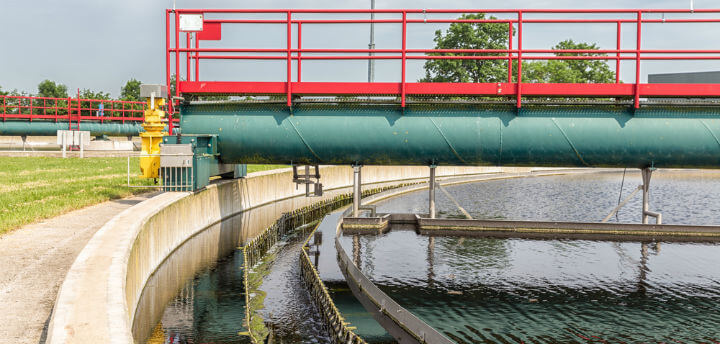How Do Municipalities Clean Wastewater? – Municipal Water Systems Guide
Written by AOS Treatment Solutions on July 23, 2018

Clean water is vital to modern society. Though it may not be on the top of your mind, most Americans rely on clean water from public sources on an hourly basis. Your community most likely relies on municipal water systems for clean water.
What Is a Municipal Water System?
A municipal water system is a public water supply network that includes a municipal water treatment plant, storage facilities like water tanks, towers, and reservoirs, and a water pipe network for distribution of treated water to residential and commercial customers.
Clean water supplies are vital for municipalities. The entire municipal water treatment process involves several technological procedures that produce effective municipal water systems. Here’s how municipal water systems work to ensure safe drinking water to homes and industrial organizations near you.
How Do Municipalities Clean Water?

There are three main steps in the treatment of municipal water.
- Primary
- Secondary
- Tertiary
Primary treatment occurs when water is collected, including supplies from streams and rivers. Primary treatment aims to remove physical contaminants from water.
The removal of fine solids and contaminants by coagulation, filtration and other techniques occurs in secondary treatment. The main difference between the primary and secondary treatment of wastewater is that primary relies mostly on physical cleaning, while secondary treatment introduces chemical procedures and microorganisms.
In the final stage, or tertiary treatment, at the municipal water plant, pH adjustment, disinfection, and carbon treatments are applied.
Primary Treatment

There are five processes in the primary phase of municipal water treatment.
- Pumping of water from its source to the municipal treatment plant needs to be done with the appropriate equipment in a way that does not contaminate the supply.
- At the wastewater screening stage, screens and filters are used to remove items such as twigs and trash.
- Water can sometimes be stored in reservoirs to allow for drought and natural biological purification.
- In hard-water areas, water is treated with sodium carbonate to precipitate calcium carbonate, a process known as pre-conditioning.
- Finally, this primary treatment phase ends with pre-chlorination where water coming into the plant is chlorinated as part of the disinfection process.
Secondary Treatment
Several techniques can be used to filter and dissolve solids during the secondary treatment phase. The municipal water treatment methods used will depend on whether this is a hard-water area, cost, and any quality requirements that need to be in place.
Coagulation and flocculation work by clumping particles and solids together by introducing chemicals like aluminum sulfate or iron that cause all contaminants to give off a positive charge. Coagulated particles are easier to filter out through settling water treatment or by sticking to sand or rock. Coagulation chemicals are added to a tank with large paddles where it is mixed with the water.
pH adjustment is applied where the water supply is acidic. In this situation lime or soda ash is added to raise the pH level. When water is slightly alkaline it enables flocculation and coagulation to work more effectively during the municipal water treatment process.
Tertiary Treatment
Water treatment disinfection is the last stage in the treatment of municipal water and is vital for the removal of pathogens. Most municipal water systems have a requirement to maintain a level of disinfection in the supply for a certain number of days before it reaches the consumer.
Wastewater chlorination is the most common method of disinfection used in municipal water systems. This needs to be done by highly skilled technical engineers to ensure the correct levels of chlorination are maintained. Ozone is another method used by passing oxygen through ultraviolet light. It is effective at eradicating protozoans but has been found to contain small amounts of the carcinogen bromate.
Maintaining a safe municipal water supply is vital for authorities to prevent disease and enable business continuity. It is crucial that your municipal water treatment plant is operated by highly trained engineers and that quality standards are maintained.
To ensure your water treatment plant provides clean safe water to your municipality, call in the AOS municipal water treatment consultants to keep your water supply running with minimal risk.
Contact us today for a consultation!

